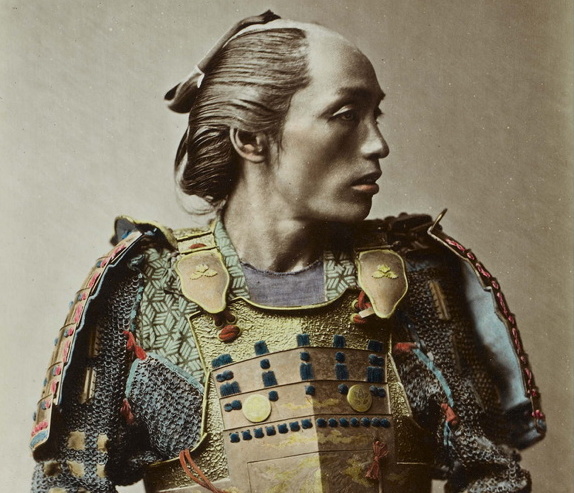Deadly, uncompromising and ruthlessly efficient, the Samurai warrior was an unparalleled force in battle. Forged in a society that valued strength and the virtuousness of honour, the Samurai warrior represented the pinnacle of Japanese society and culture for 500 years. Samurai were born into the warrior caste of Japanese society through warrior families, an elite group of nobles sworn to protect their lords or Daimyo. Through a strict sense of honour to family or clan the Samurai would act on the battlefield as elite officers and leaders. The very word Samurai means ‘one who serves’, and throughout the Kamakura period and into the wars of the Daimyo (1478 – 1605), they were at the forefront of battle, ready to kill the enemy and lay down their lives to ensure victory.
Undoubtedly the most important aspect of the Samurai warrior was his Kanata sword. From the start of the sword’s generalised use among the Samurai in the late Kamakura Period (1192-1333), Samurai trained constantly with the Kanata, it’s iconic curved body being traditionally seen as an embodiment of the personality of its owner; an extension of his very soul.The Samurai lived to hone the art of dealing death to his enemies through its use.
The Samurai’s appearance on the battlefield would strike awe and terror in the hearts of his enemies. His Armour, helmet and banners were all designed to make sure that he stood out, so his glorious deeds were remembered by the people who served around him. His helmet (Kabuto) was heavily customised and decorative, often bearing crests and different coloured designs. Horns and threatening facial masks were also used as part of the helmet, this was more for intimidation rather than protection in contrast to European designs. Body and shoulder armour evolved tremendously, from the rather crude light weight scale armour to the far heavier ornately decorated plate armour designed specifically to deflect arrows and gun shots. The Shoulder armour (sodo) was often separate from the body to aid flexibility in contrast to European designs where the shoulder armour and body armour was part of the same component.
Contrary to popular belief, Samurai did not use the Kanata in battle exclusively. In the initial era of the Samurai, before the 14th century, they were commonly mounted on horse-back and used bows to fire arrows into the enemy as they rode at high speeds across the battlefield. The Kanata would only be used in battle infrequently for close quarter work. It was more commonly employed in the lethal combat that could develop when Samurai fought Samurai in single combat. In this type of engagement the swords flexibility as a stabbing and parry weapon was bought to the fore, as the two great warriors fought to avenge the honour of their clan.
To discover more about the downfall of the Samurai check out ‘Death of the Samurai’ in Issue 5 of All About History available now!




